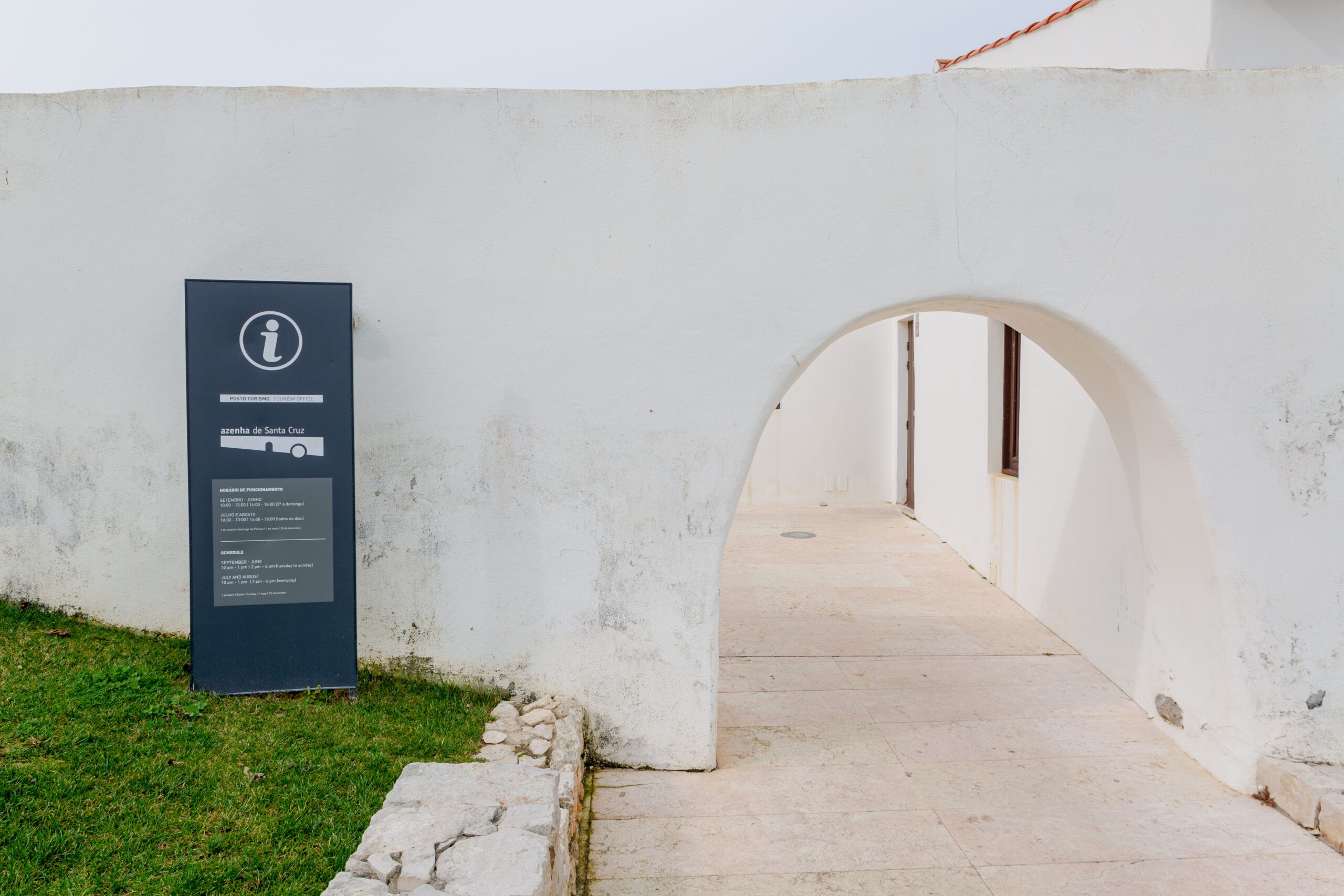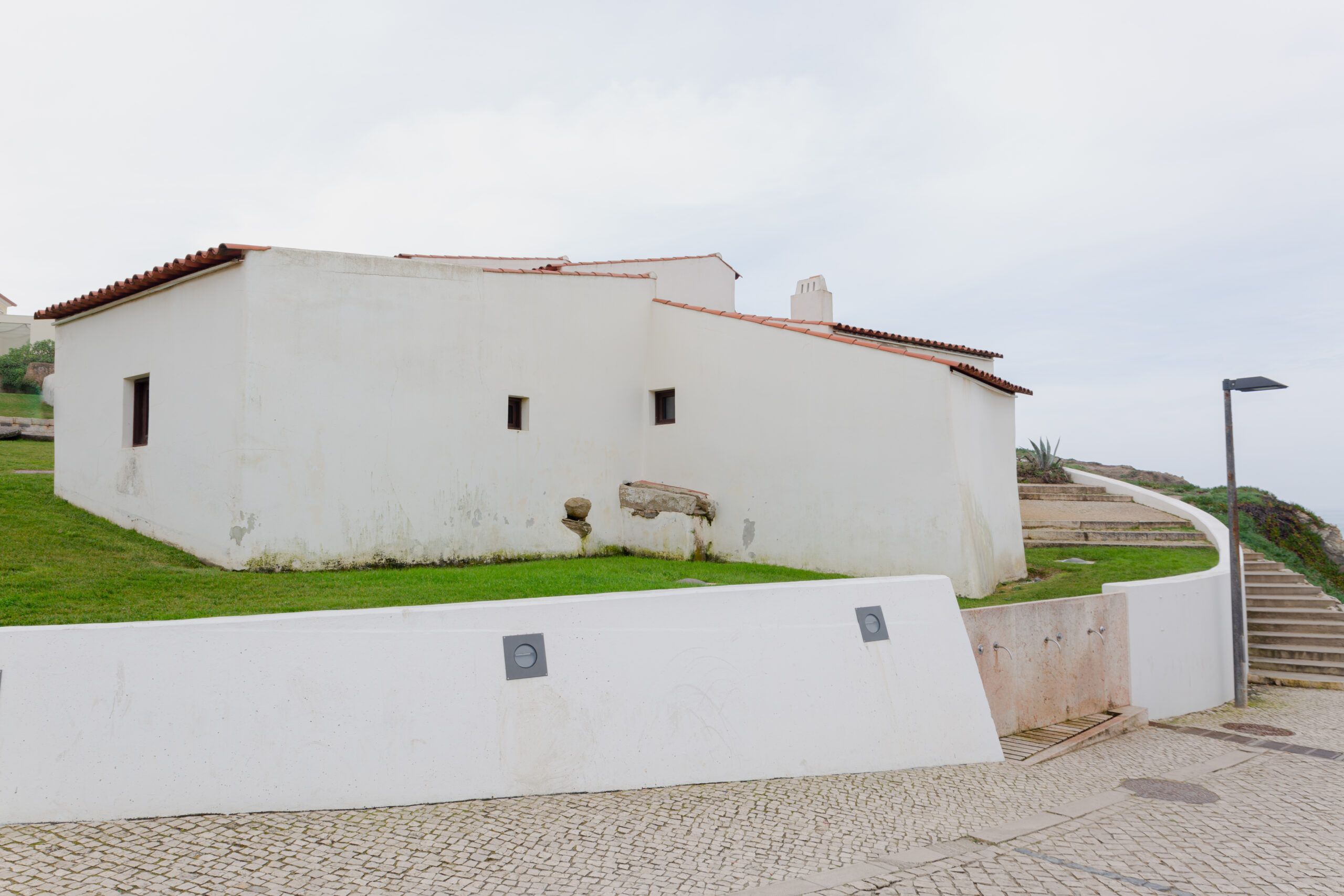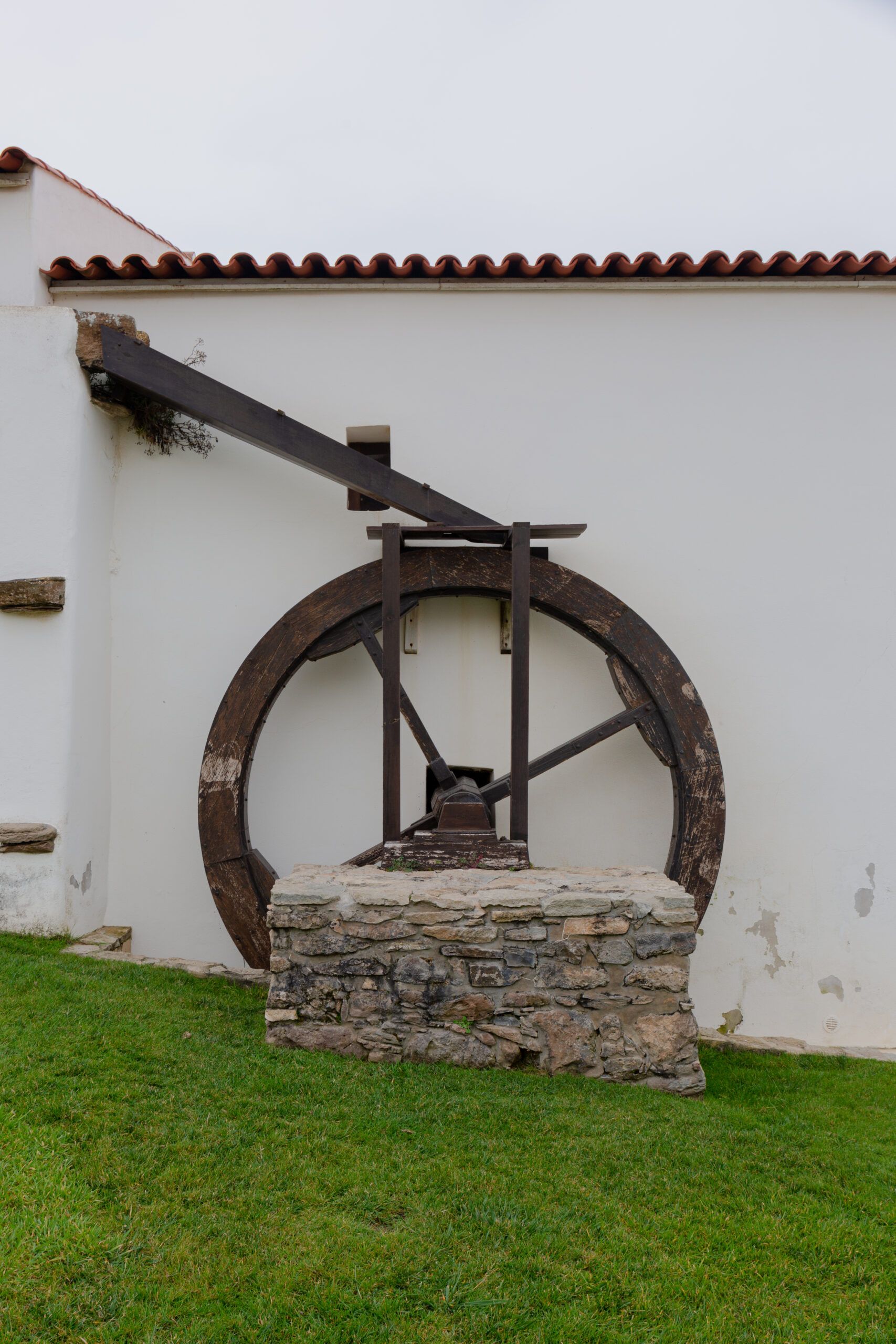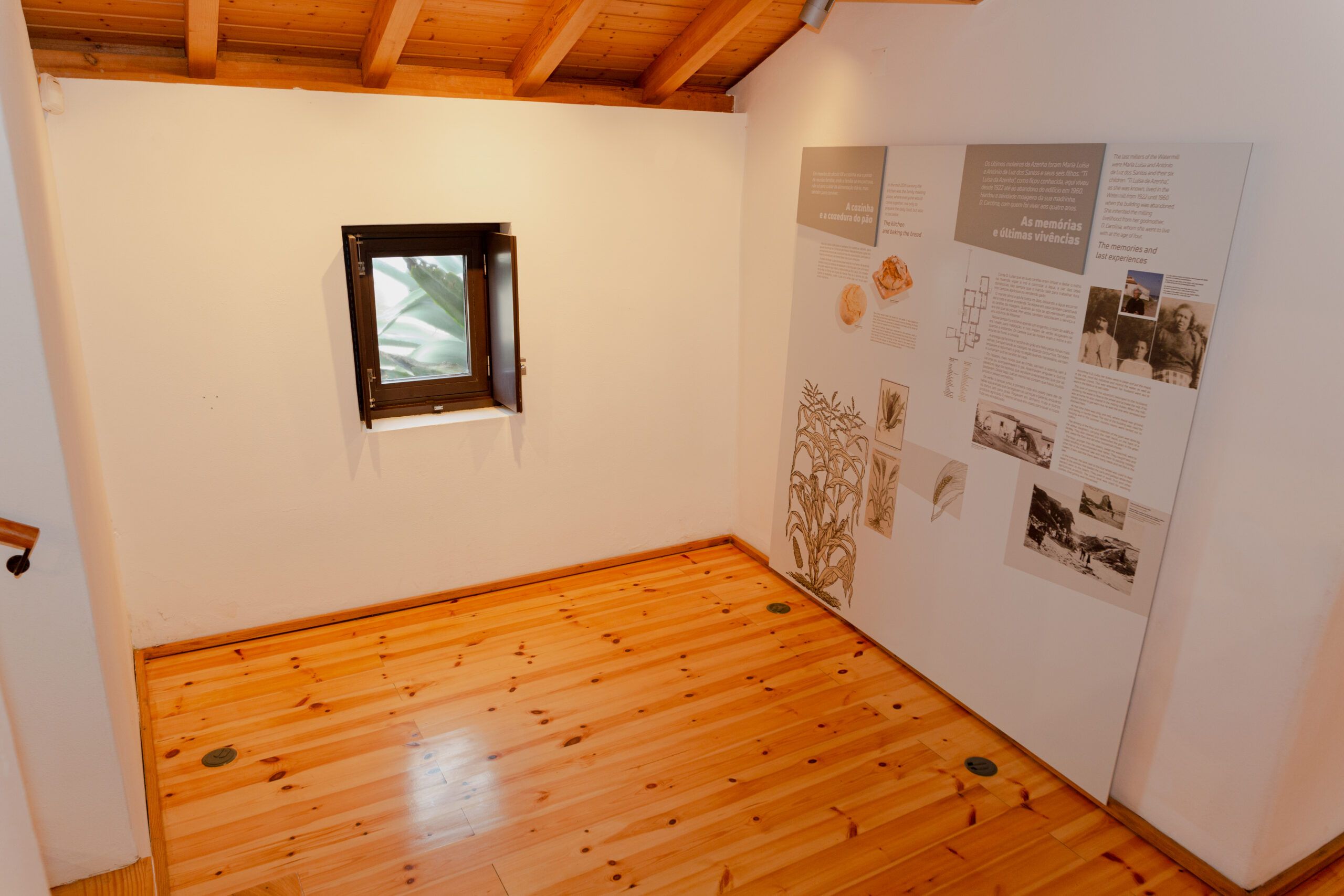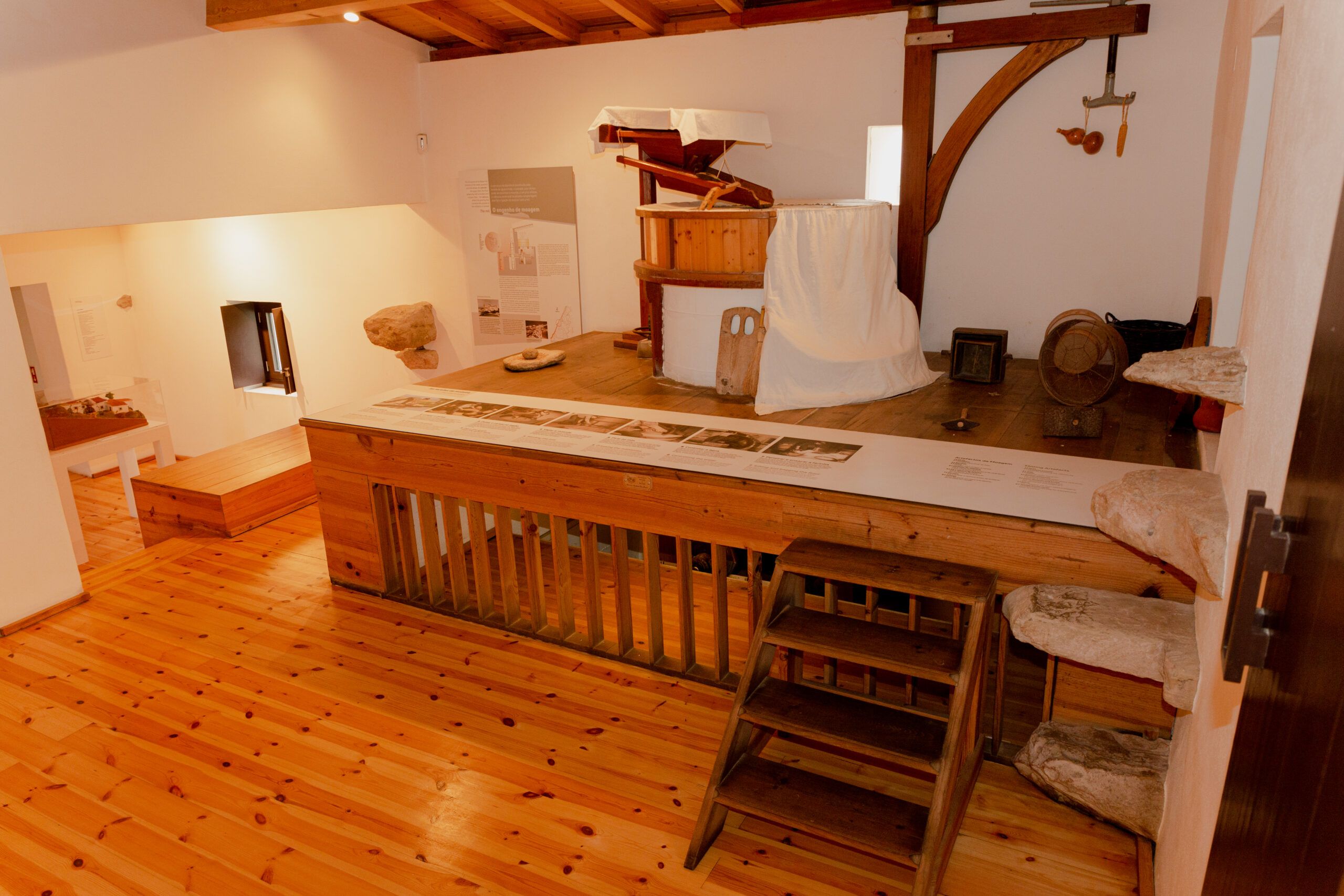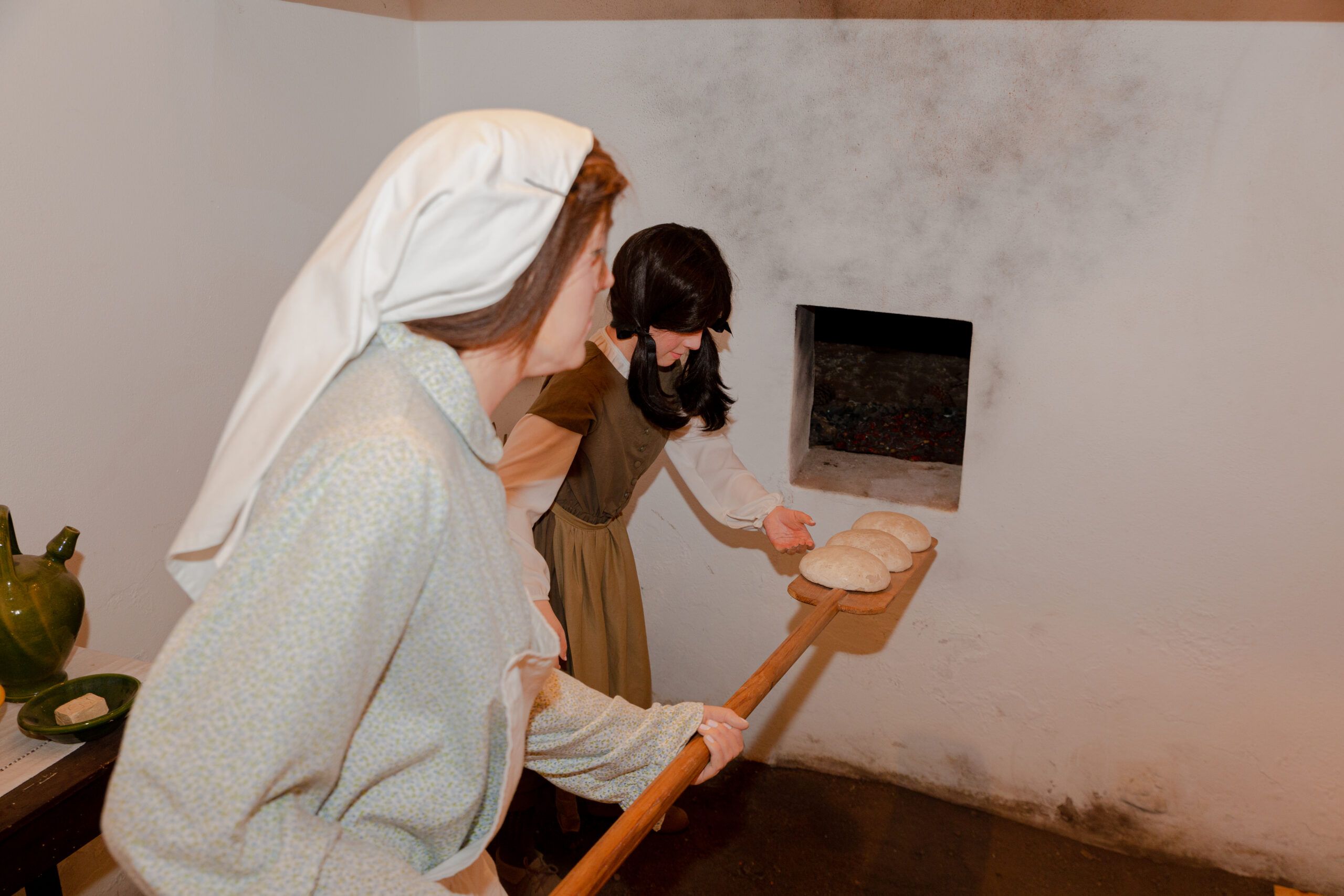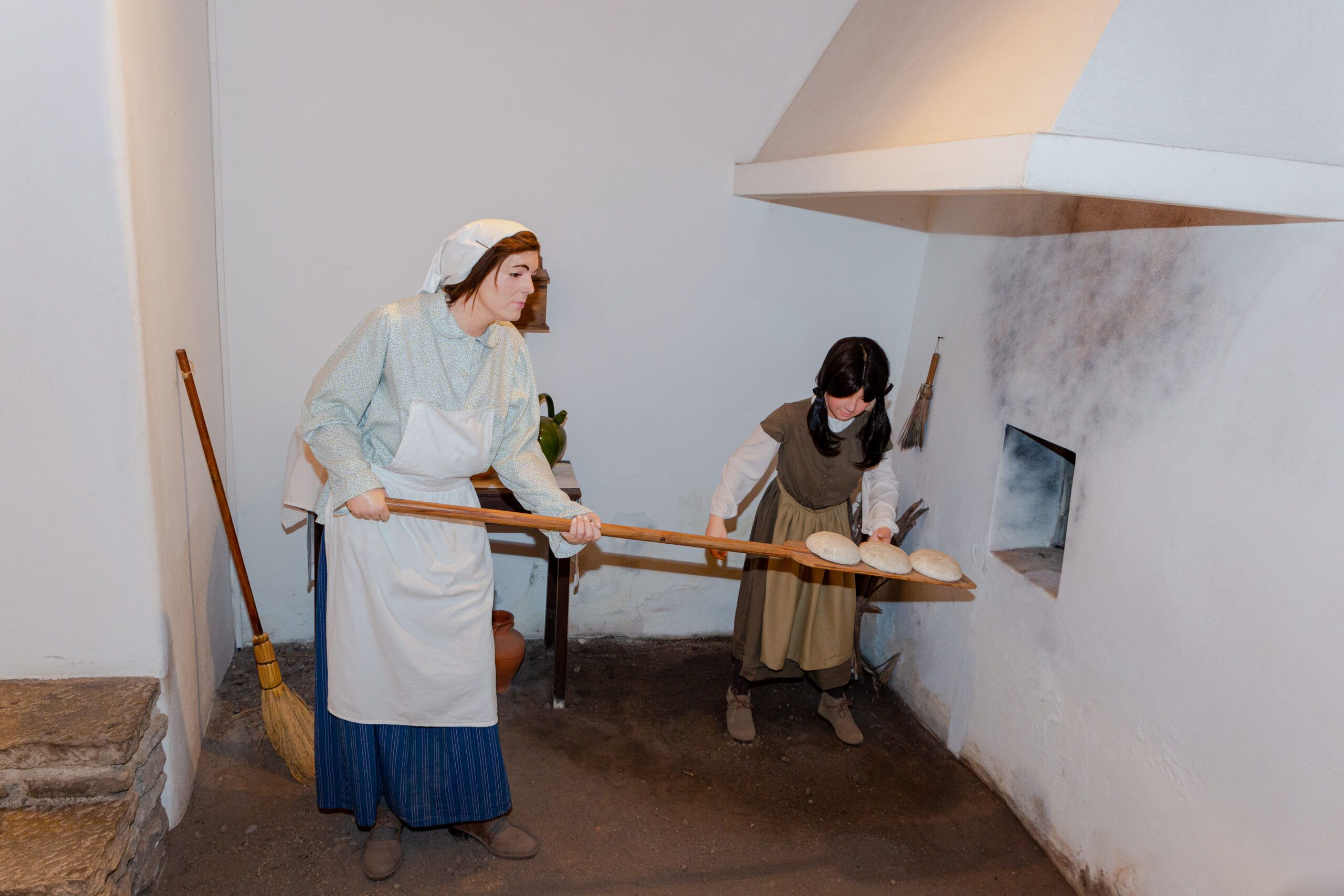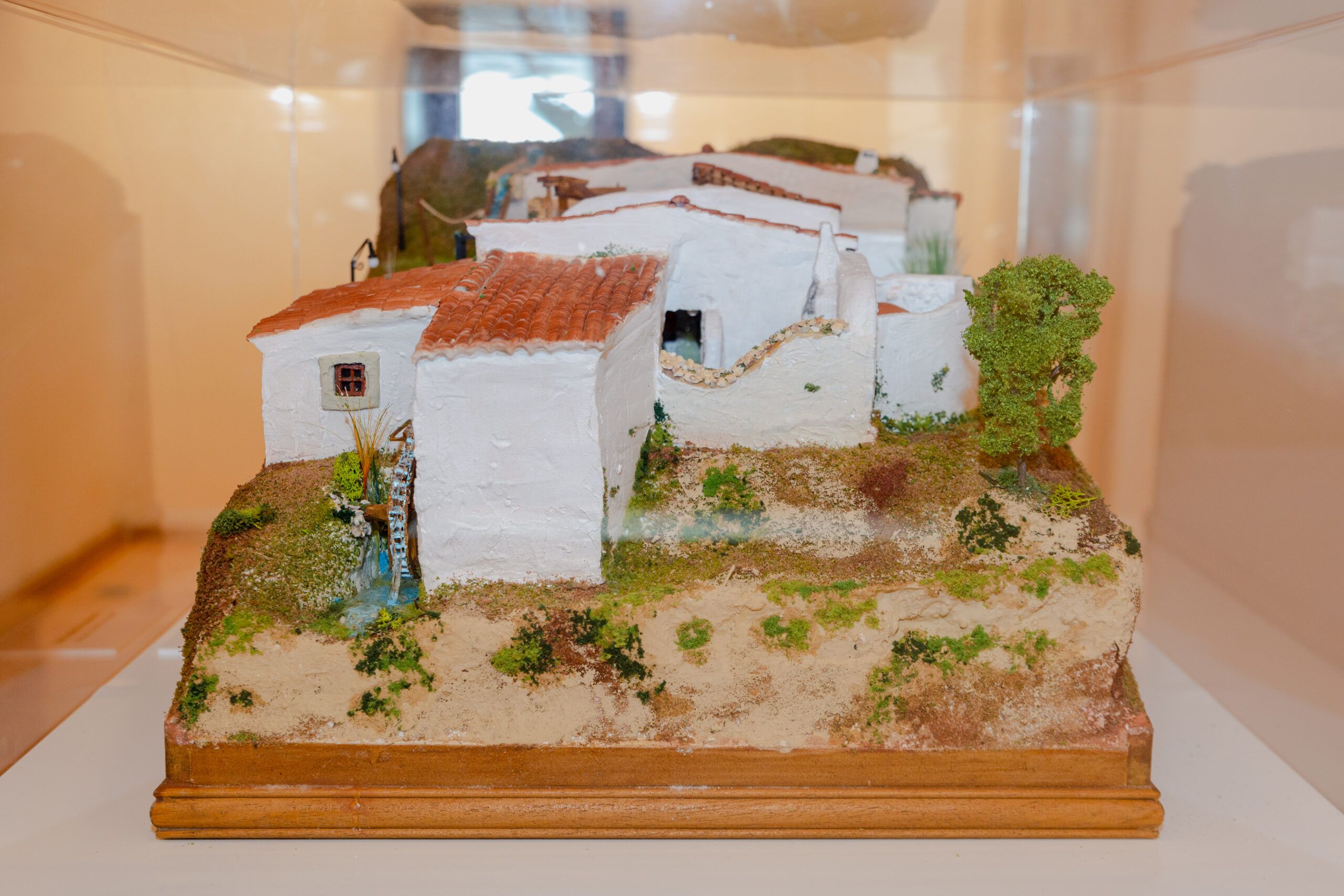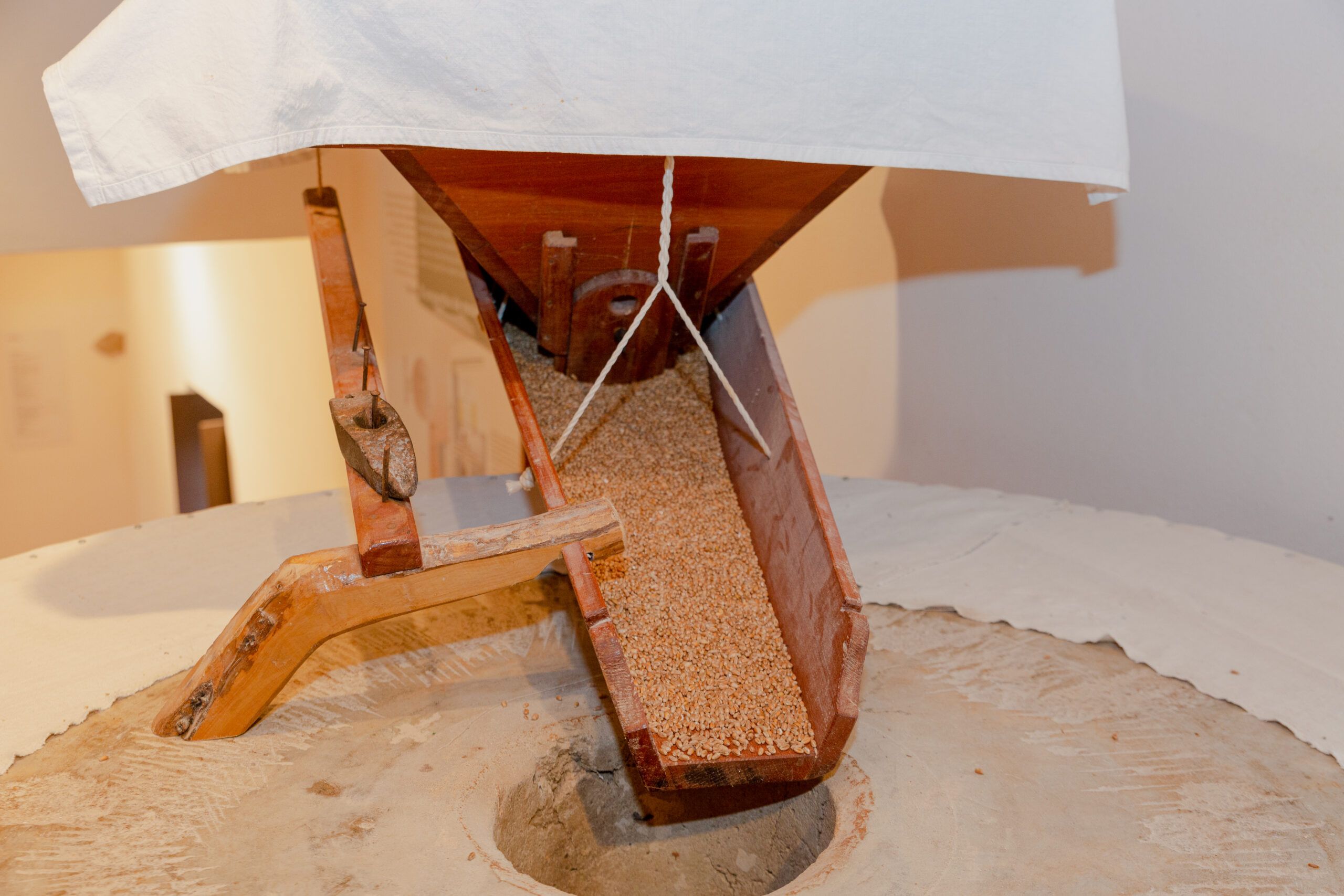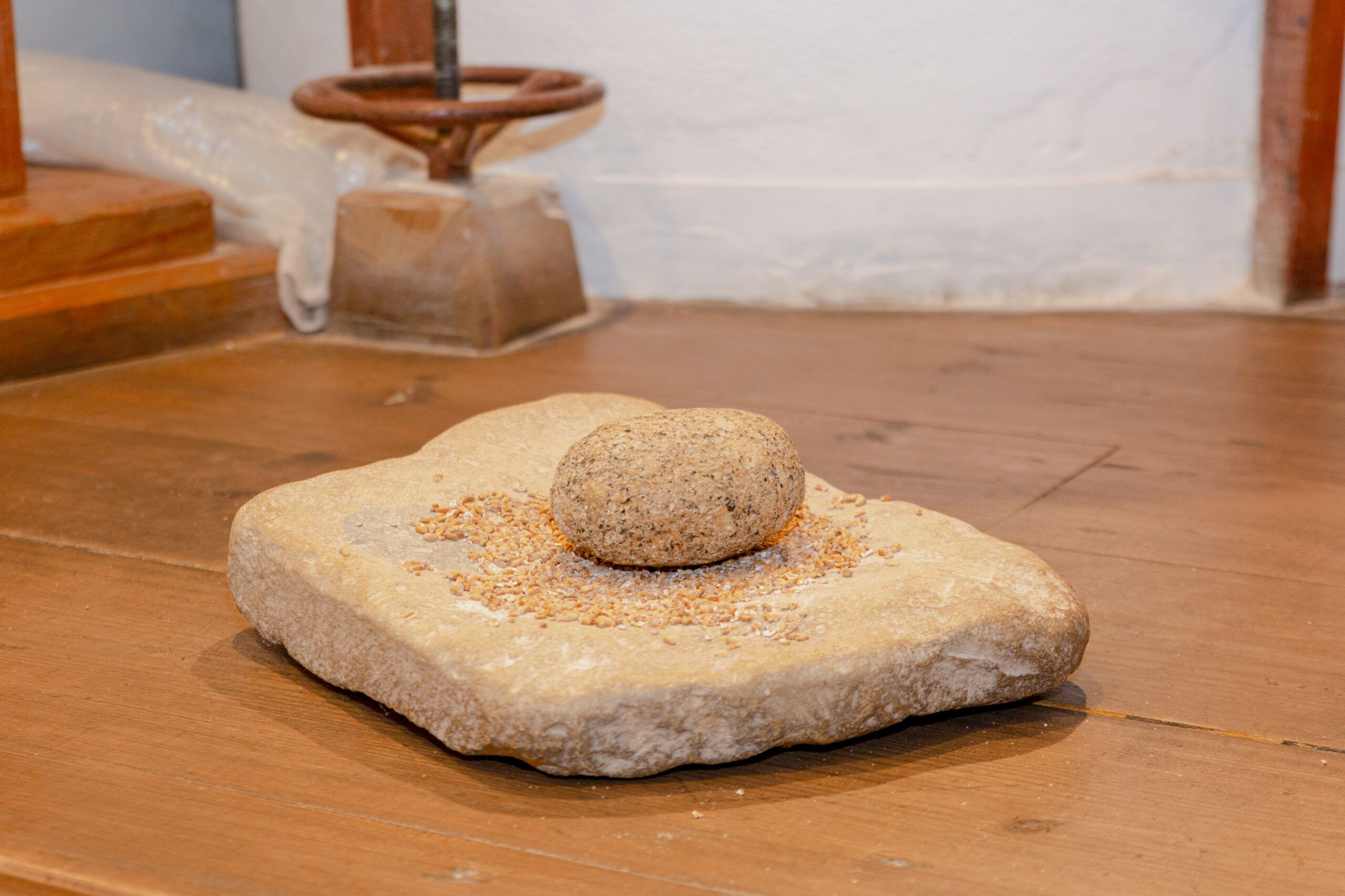Azenha de Santa Cruz
Categories/tags: Utilization of water and wind power.
Historical context: The Azenha de Santa Cruz stands as a testament to Portugal’s rich industrial history, particularly in milling. Constructed in the late XV century, this water-driven mill served as a pivotal hub for grain milling, harnessing the power of the nearby stream. Over the centuries, it adapted to technological advancements, incorporating a “pisão” in the XIX century for textile processing. Despite its transition from an active milling facility to a cultural relic, its significance as a symbol of industrial heritage has only grown, leading to its classification as a public interest monument in 1997.
Form – main architectural features: The Azenha de Santa Cruz features an irregular rectangular layout, strategically positioned along the watercourse to maximize its hydropower potential. The structure comprises several compartments arranged in terraces, with remnants of distinct roof coverings. Notable architectural elements include arched doorways, occasional niches, and windows along the walls. The milling mechanism, powered by a single-arm wooden wheel, utilized iron fittings to drive the milling stones. Vestiges of additional mill components, such as conduits and grinding rooms, reflect the site’s historical evolution.
Function: Initially designed for grain milling, the Azenha de Santa Cruz served as a vital processing center, catering to the agricultural needs of the region. With advancements in textile manufacturing, it later accommodated a “pisão” for fabric processing. Following its operational phase, the mill transitioned into disuse, eventually repurposed for cultural and touristic functions. Today, it operates as a museum, offering insights into traditional milling practices and showcasing the cultural significance of industrial heritage.
Lessons for sustainability: The restoration and adaptive reuse of the Azenha de Santa Cruz underscore the importance of preserving historical structures while promoting sustainable practices. By repurposing the mill into a museum and cultural center, the community honors its industrial past while fostering educational initiatives on sustainability and heritage conservation. Additionally, initiatives to rehabilitate abandoned heritage sites contribute to local revitalization efforts and promote responsible tourism practices.
Cultural heritage and tourism: As a designated public interest monument, the Azenha de Santa Cruz attracts visitors interested in exploring Portugal’s industrial heritage. Its transformation into a museum and interpretive center offers tourists and locals alike an immersive experience into the region’s milling history. Through guided tours, educational programs, and cultural events, the site serves as a focal point for preserving traditions and fostering appreciation for the cultural legacy of Torres Vedras.
Location: Santa Cruz – Portugal
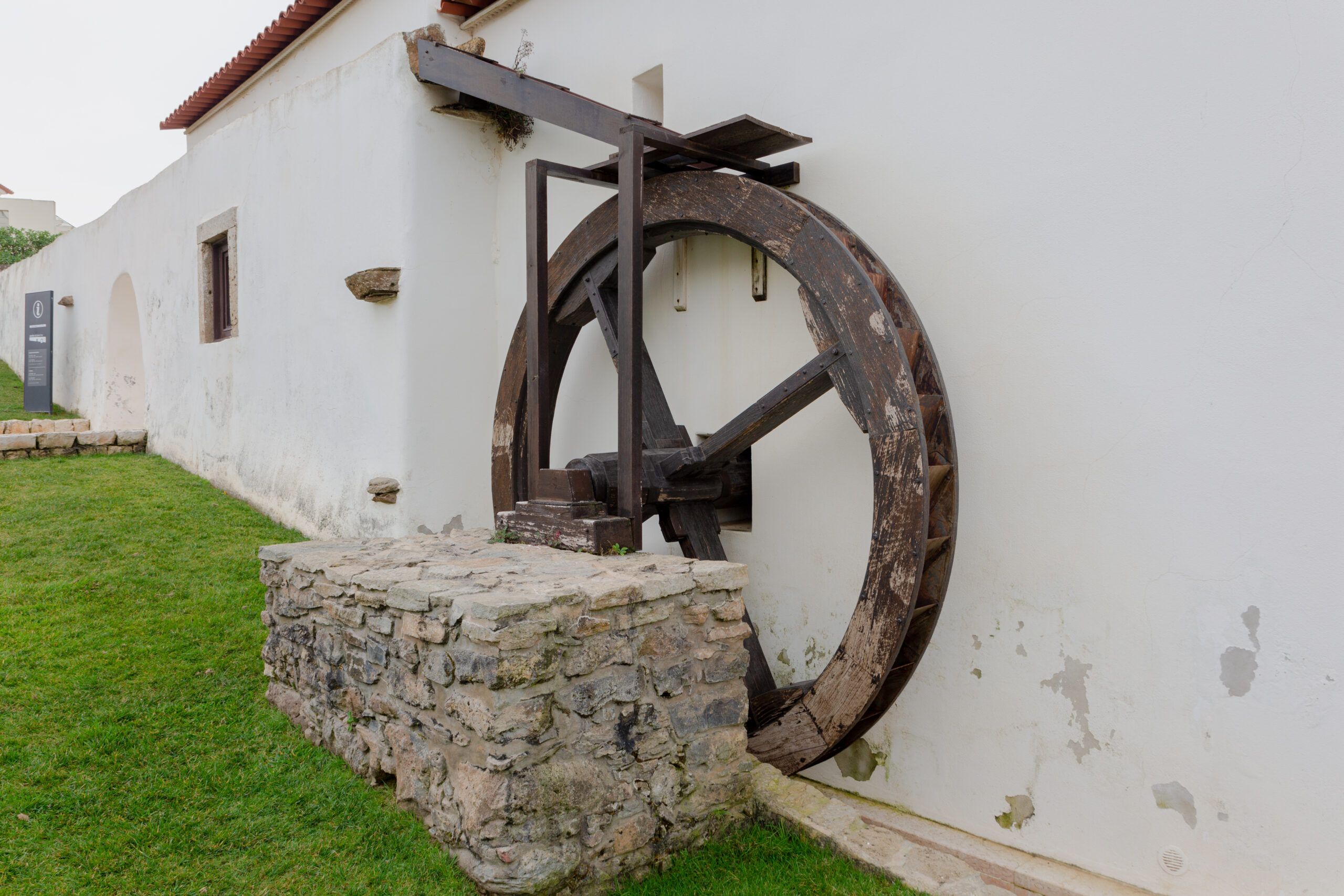
Azenha de Santa Cruz – Portugal
Sources
Azenha de Santa Cruz. (2006, April 26th). In Wikipedia. https://pt.wikipedia.org/wiki/Azenha_de_Santa_Cruz
de Luna, I. & Cardoso, G. (2008). Azenha de Santa Cruz (Torres Vedras): resultados dos trabalhos arqueológicos, 2004-2007. Torres Vedras.
Sistema de Informação para o Património Arquitetónico. (2011). Azenha de Santa Cruz. Retrieved March 10th, 2024, from http://www.monumentos.gov.pt/Site/APP_PagesUser/SIPA.aspx?id=6338
